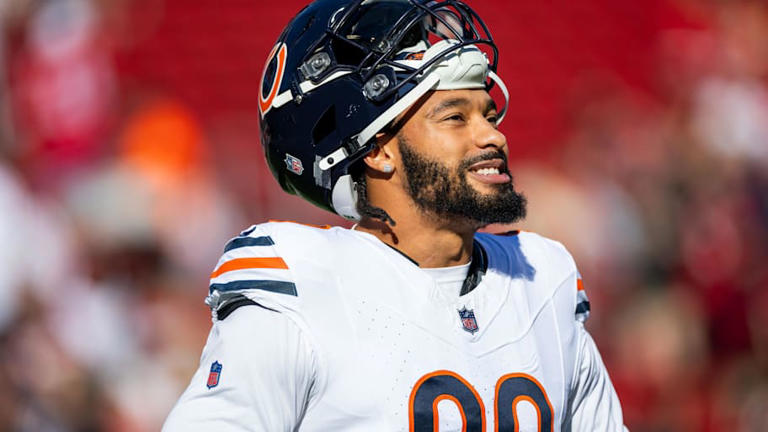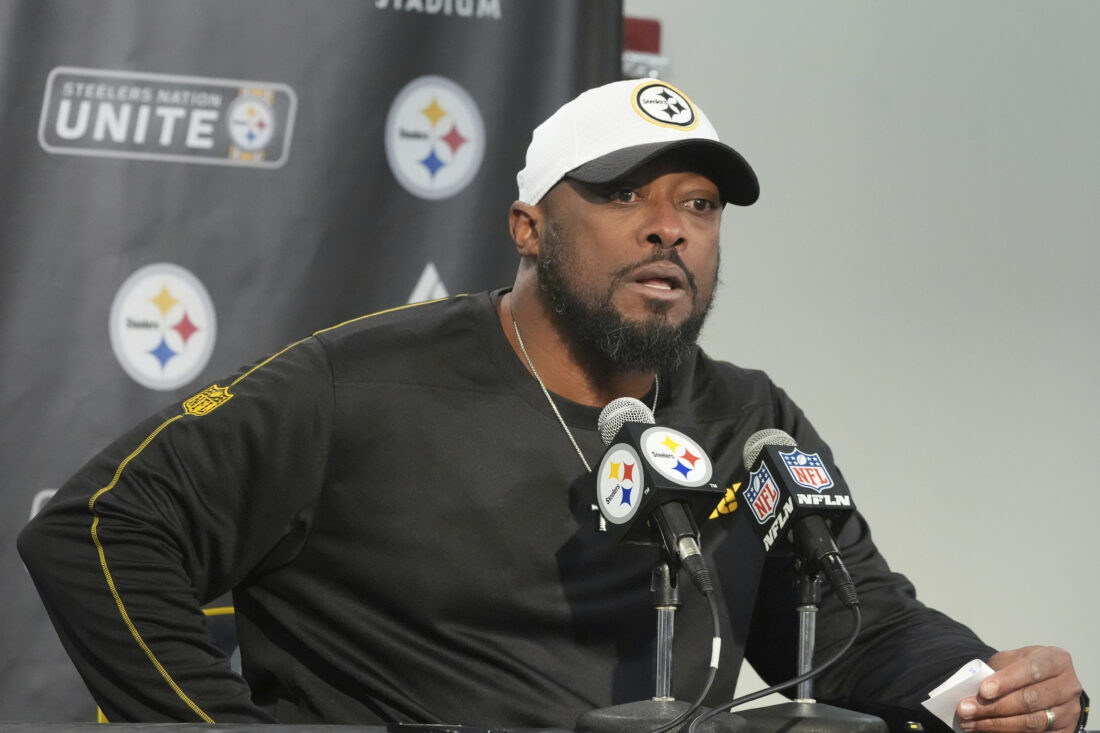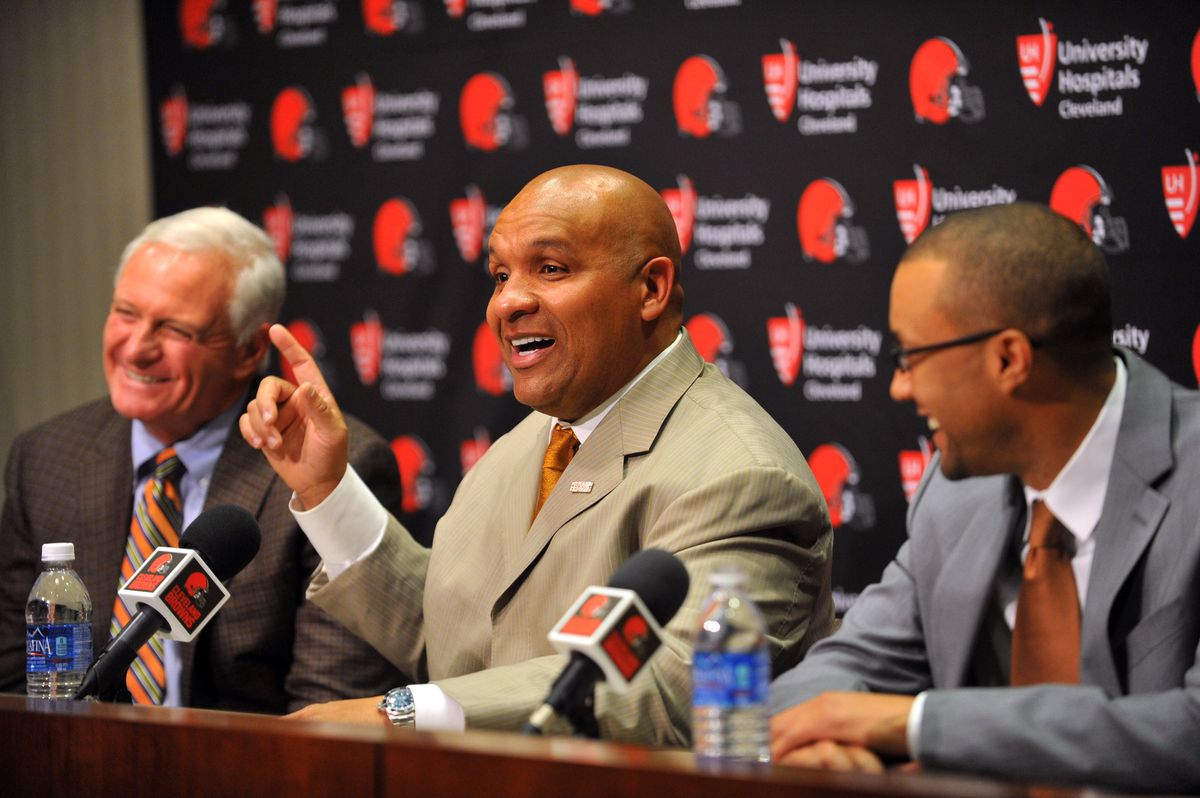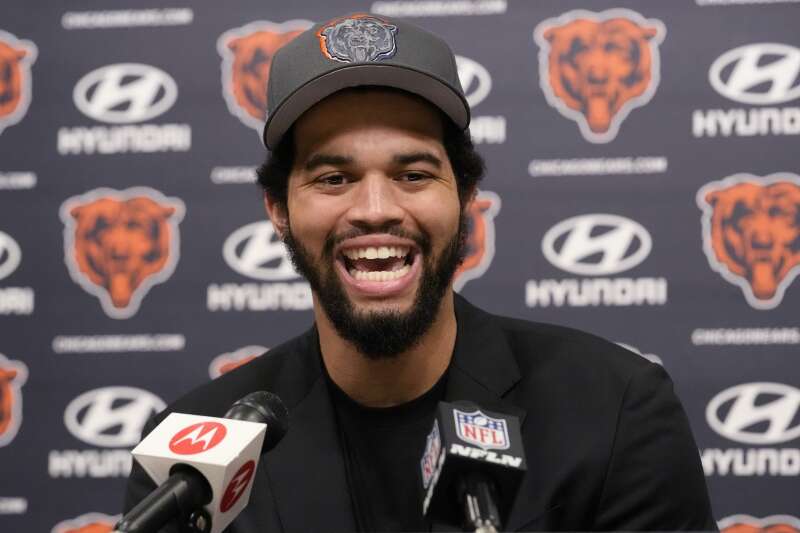It’s worth wondering how much sway Bears defensive coordinator Dennis Allen will have in the offseason talent acquisition process.
Defensive coordinators who achieve success need particular body types with players depending on the techniques they utilize to attack up front. Coaches can talk all they want about molding what they do according to the talent at hand but if the new talent coming into the building can be a better fit for their style, then why switch styles?
A coach doesn’t scrap their entire system—it’s like expecting a leopard to lose its spots.
“We’re going to add the necessary ingredients that we need to create what we need to be able to do from a defensive standpoint,” Allen said. “I’m excited about working with the guys that we have, and I’m looking forward to working with (GM) Ryan (Poles) and his staff to see if we can’t find some pieces to add to it.”
The place on the defensive front where it gets really interesting is defensive end.
Making ends meet
If you looked at the typical Bears defensive deployment and then projected it to what Allen did in New Orleans, they would need to move Montez Sweat to the right side of the defensive line.
Sweat did move around on occasion but by and large remained on the Bears defensive left edge.
Cameron Jordan manned the left side of the Saints’ line for years at a Pro Bowl level as a 287-pounder who stopped the run and rushed the passer while Allen was there.
Sweat is 262 pounds, which equates with the size of players Allen always had on the defense’s right end. Sweat is a solid run defender, though.
So would the Bears need to move Sweat away from the side where he’s most comfortable?
The Saints, with Allen, also did not run a defense with 240-pound or 250-pound edge. The Bears have tended to like bigger edge players but had their share of lighter ones.
What happens to those guys now?
Jacob Martin, Dominique Robinson and Austin Booker all come in well under the traditional weight of Allen’s edge rushers over the years. Darrell Taylor was 267 last season and is big enough but is a free agent and produced very little in his one Bears season.
DeMarcus Walker is Jordan’s size at 6-4, 280 and able to move inside in pass rush situations. Would they flip Walker, if he’s even part of the plan for this year? And he might not be part of those plans considering the Bears save more than $5 million against the cap by cutting him prior to June 1 with only about a $666,000 cap hit, per Overthecap.com figures.
The size issue
From 2018 through the end of Allen’s time with the Saints last year, New Orleans’ lightest defensive end was 261 pounds. In 2017 they drafted former Bear Al-Quadin Muhammad and had Jonathan Freeney on the roster below that weight. They got rid of both players before 2018 and never had another end under 261.
So while weight is a situation often looked at closely for defensive tackle body types in the draft, it’s going to be a factor for the Bears with edges.
By this measurement you could probably scratch Jalon Walker from Georgia, James Pearce Jr. of Tennessee, Mike Green from Marshall and Donovan Ezeiruaku from Boston College.
Abdul Carter, a possible No. 1 overall pick from Penn State, doesn’t fit the mold, either. But at 251 pounds in college and with his pass rush dominance, they’d definitely find a way to accommodate him. They won’t get the chance to take him, unless they give up the farm to move up in a trade and take him.
Who to draft for a fit
The NFL Mock Draft Database has 12 edge players rated within the first two rounds on its big board, which seems like a lot. But it’s a key position. This is what would be left in the first two rounds for the Bears to look at if you eliminate players who didn’t meet this weight restriction:
- Mykel Williams, Georgia, 6-5, 265
- Shemar Stewart, Texas A&M 6-6, 291
- Nic Scourton, Texas A&M, 6-4, 280
- Jack Sawyer, Ohio State, 6-5, 260
- J.T. Tuimoloau, Ohio State, 6-5, 269
- Landon Jackson, Arkansas, 6-7, 280
- Princely Umanmielen, 6-4, 256
A 256-pounder can easily add the 5 pounds. Guys in the 240s, forget it.
If you wanted the ideal edge for the new Bears system it would be Stewart, Scourton, or Jackson, and possibly Tuimoloau, but he would need to bulk up a bit.
This is not the only place they can find an end to replace 280-pound DeMarcus Walker.
The free agents edges
Among the top 100 Pro Football Focus unrestricted free agents, there are 16 at the edge position. However, there are seven who don’t fit the 260-pound cutoff or aren’t close enough to it to make it: Haason Reddick, Malcolm Koounce, Uchenna Nwosu, Baron Browning, Azeez Ojulari, Dennis Gardeck and Josh Uchi.
Khalil Mack was drafted by the Raiders when Dennis Allen was their head coach but high cost and a desire by Mack to play closer to his West Coast home might keep the Bears from successfully bringing him on board.
Eagles impressive edge Josh Sweat would be expensive but fits the mold at 6-5, 265.
A former Commanders teammate of Montez Sweat, Chase Young, fits it at 6-5, 265.
Others who do are Dallas veteran DeMarcus Lawrence (6-3, 265), Washington’s Dante Fowler Jr. (6-3, 261), Dallas’ Chauncey Golston (6-5, 268) and Texans edge Derek Barnett (6-3, 259).
But there are a couple who are ideal size to be in Walker’s spot as the heavy edge against the run. One is Colts edge Dayo Odeyingbo, who is 6-6, 286. He’s almost exactly the size of Saints veteran Jordan.
The other player is one Poles already tried to trade to get and was very close to acquiring before he lost out and that’s Falcons free agent Matthew Judon (6-3, 275).
Now Poles could sign Judon without giving up a pick in a trade.
Judon didn’t exactly excel in Atlanta with 5 1/2 sacks but that still would have tied Montez Sweat for the Bears lead. And he is a four-time Pro Bowl player who usually was one of the higher defensive ends in tackle totals. So he is stout as a run defender.
Oh yeah, and then there’s that
There is one other option.
They could always trade for Myles Garrett.
He does fit their need for a bigger edge player who rushes the passer. Getting Cleveland to part with him for less than a ransom would be the problem but not half as big as the issue of how they would fit all of the remaining prorated bonus money from his contract against their salary cap over the next two years as rules state they must do.




